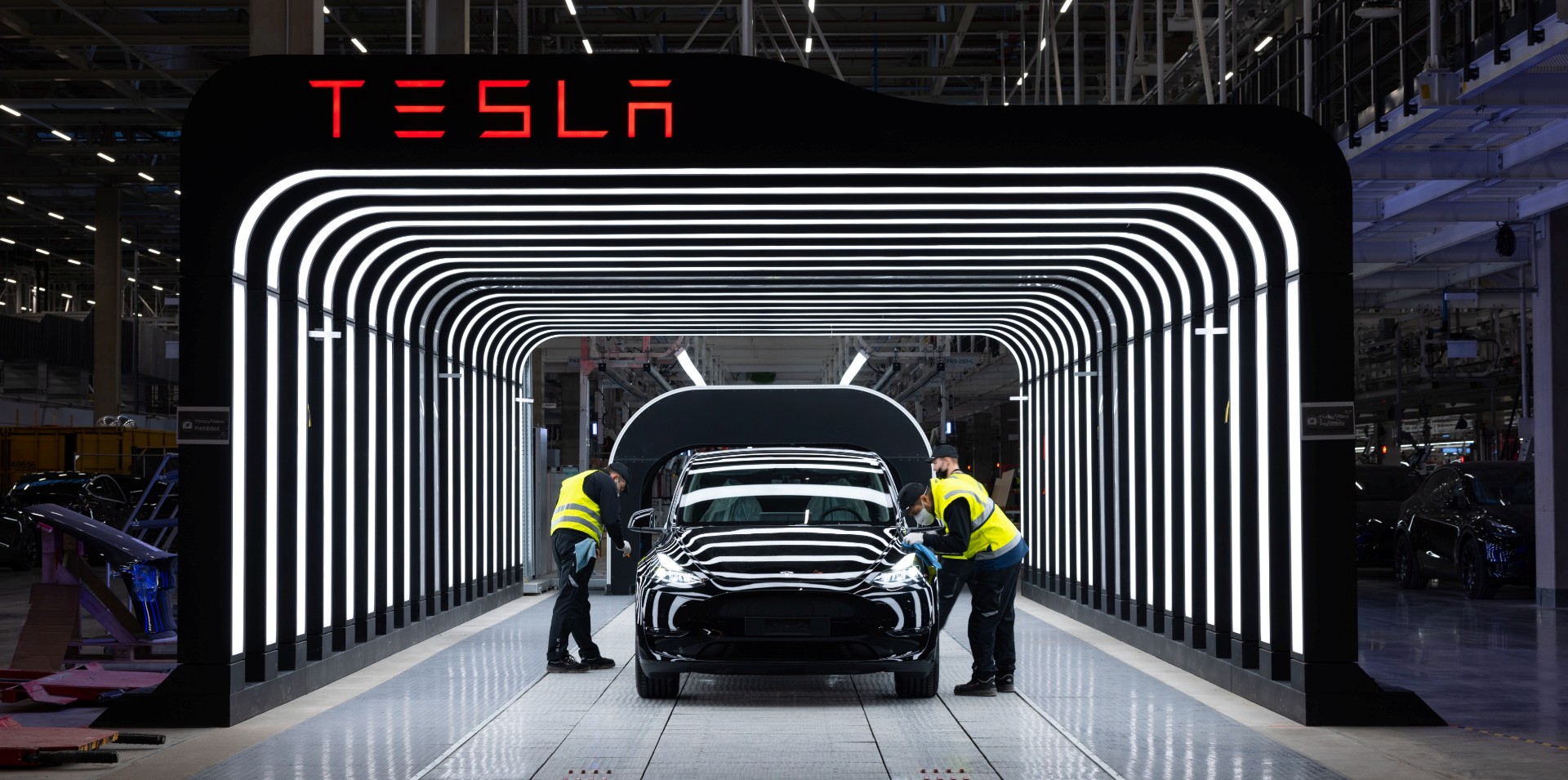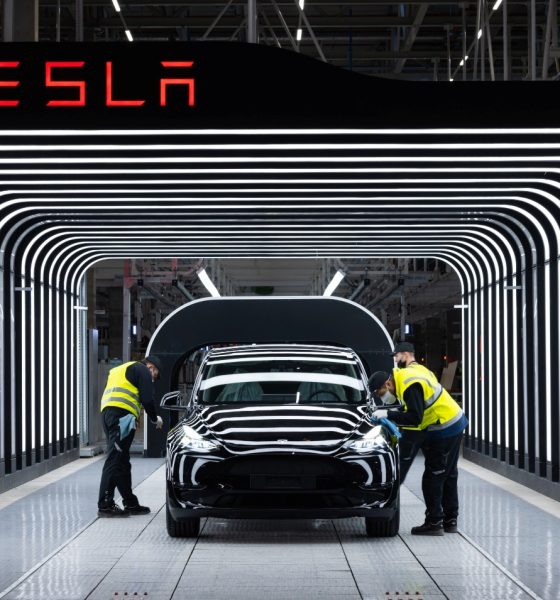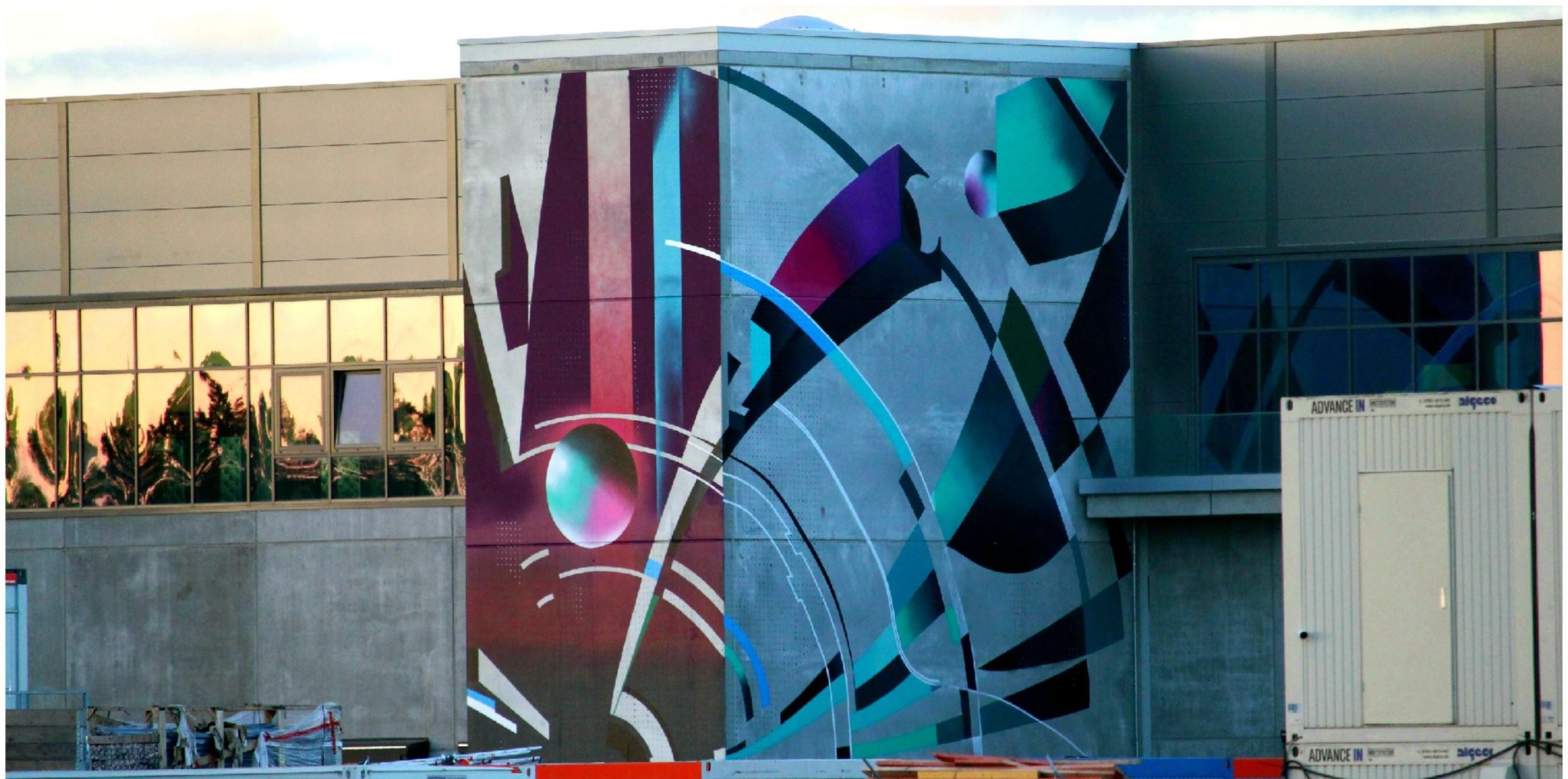

News
Tesla factory delays show ‘how we stand in our own way’: German industry experts sound off
Water pumping approvals. Bats in trees. An empty tank. These are just a few things that have stopped Tesla’s progress in Germany as it attempts to launch its first electric vehicle manufacturing facility in Europe. It has been a long and trying road for the electric automaker, which has attempted to surf through the waves of German bureaucratic red tape since early 2020. After another delay in the approval process, which has expected production start dates ranging across three quarters, industry experts challenge Germany’s reputation as a place for companies to conduct business.
“Tesla shows the world how we stand in our own way,” Ferdinand Dudenhöffer, Director of the Center of Automotive Research, said. While Dudenhöffer does agree that Tesla should have treaded more carefully during the approval of a battery production facility and been smarter regarding document submissions, the industry expert believes that German red tape has mainly told a story of how hard it is to get things started if you are planning to open a business in the country. “But such hurricanes of resistance show how little sustainable Germany is,” he said in an interview with Handelsblatt.
Coverage of the Gigafactory Berlin project has spanned over two years for journalists in the sector, including myself. Musk announced that Tesla would bring a production facility to Germany in late 2019 while accepting an automotive industry reward. The project began just months later, in the early days of January 2020. More than two years later, a factory, a parage, a carnival, and a lot of speculation regarding when Tesla will finally receive the green light still exist. Earlier this week, German media reported that Tesla would likely not receive permission to begin production and deliveries until mid-March “at the earliest.” It is a far cry from the Summer 2021 start dates that many close to the project anticipated.
The delays are starting to worry those who see Germany as a potential leader in the future automotive industry, which over the past ten years has changed more than it did in the previous ninety. Car companies are not just about making cars anymore. They’re relatively closer to tech companies than anything due to the advancements in software and the widespread focus on developing autonomous driving platforms. Regardless of what a company brings to the table, they will likely have to encounter some major pushback and delays in their project. Even EV leader Tesla is having problems. Dudenhöffer wonders which companies are observing the red tape and the pushback, thinking that other options may be better.
Giga Berlin’s new graffiti panels as of early February 2022. (Credit: @Gf4Tesla/Twitter)
It isn’t just companies, either. Dudenhöffer says that the renewal of motorway bridges can take years or even decades to be rebuilt completely due to new approval procedures. It is not about getting things done quickly, it seems.
When things as simple as bridge repairs are taking over ten years to complete, there has to be an indication that the processes for planning and approval need to be revised. That is what Chief Executive Holder Loesch said, who encouraged the agencies responsible for approving projects to take a look at refining the approval steps. Loesch, whose association is overseeing the installation of wind turbines and industrial plants to double by 2030, says that his plans will include the submission of around 20,000 permits during the course of action. “This mammoth task can only be mastered with a comprehensive reform of planning and approvals that includes processes for industrial plant structures,” he said.
Even Brandenburg Economics Minister Jörg Steinbach submitted ideas to help expedite potential approvals. Driven by the lagging approval process in the Tesla project, Steinbach said that “It should be possible to make changes to the building plan in the ongoing approval process without the process having to be completely restarted.”
I’d love to hear from you! If you have any comments, concerns, or questions, please email me at joey@teslarati.com. You can also reach me on Twitter @KlenderJoey, or if you have news tips, you can email us at tips@teslarati.com.

News
Elon Musk’s Grokipedia surges to 5.6M articles, almost 79% of English Wikipedia
The explosive growth marks a major milestone for the AI-powered online encyclopedia, which was launched by Elon Musk’s xAI just months ago.

Elon Musk’s Grokipedia has grown to an impressive 5,615,201 articles as of today, closing in on 79% of the English Wikipedia’s current total of 7,119,376 articles.
The explosive growth marks a major milestone for the AI-powered online encyclopedia, which was launched by Elon Musk’s xAI just months ago. Needless to say, it would only be a matter of time before Grokipedia exceeds English Wikipedia in sheer volume.
Grokipedia’s rapid growth
xAI’s vision for Grokipedia emphasizes neutrality, while Grok’s reasoning capabilities allow for fast drafting and fact-checking. When Elon Musk announced the initiative in late September 2025, he noted that Grokipedia would be an improvement to Wikipedia because it would be designed to avoid bias.
At the time, Musk noted that Grokipedia “is a necessary step towards the xAI goal of understanding the Universe.”
Grokipedia was launched in late October, and while xAI was careful to list it only as Version 0.1 at the time, the online encyclopedia immediately earned praise. Wikipedia co-founder Larry Sanger highlighted the project’s innovative approach, noting how it leverages AI to fill knowledge gaps and enable rapid updates. Netizens also observed how Grokipedia tends to present articles in a more objective manner compared to Wikipedia, which is edited by humans.
Elon Musk’s ambitious plans
With 5,615,201 total articles, Grokipedia has now grown to almost 79% of English Wikipedia’s article base. This is incredibly quick, though Grokipedia remains text-only for now. xAI, for its part, has now updated the online encyclopedia’s iteration to v0.2.
Elon Musk has shared bold ideas for Grokipedia, including sending a record of the entire knowledge base to space as part of xAI’s mission to preserve and expand human understanding. At some point, Musk stated that Grokipedia will be renamed to Encyclopedia Galactica, and it will be sent to the cosmos.
“When Grokipedia is good enough (long way to go), we will change the name to Encyclopedia Galactica. It will be an open source distillation of all knowledge, including audio, images and video. Join xAI to help build the sci-fi version of the Library of Alexandria!” Musk wrote, adding in a later post that “Copies will be etched in stone and sent to the Moon, Mars and beyond. This time, it will not be lost.”
News
Tesla Model 3 becomes Netherlands’ best-selling used EV in 2025
More than one in ten second-hand electric cars sold in the country last year was a Tesla Model 3.

The Tesla Model 3 became the most popular used electric car in the Netherlands in 2025, cementing its dominance well beyond the country’s new-car market.
After years at the top of Dutch EV sales charts, the Model 3 now leads the country’s second-hand EV market by a wide margin, as record used-car purchases pushed electric vehicles further into the mainstream.
Model 3 takes a commanding lead
The Netherlands recorded more than 2.1 million used car sales last year, the highest level on record. Of those, roughly 4.8%, or about 102,000 vehicles, were electric. Within that growing segment, the Tesla Model 3 stood far ahead of its competitors.
In 2025 alone, 11,338 used Model 3s changed hands, giving the car an 11.1% share of the country’s entire used EV market. That means more than one in ten second-hand electric cars sold in the country last year was a Tesla Model 3, Auto Week Netherlands reported. The scale of its lead is striking: the gap between the Model 3 and the second-place finisher, the Volkswagen ID3, is more than 6,700 vehicles.
Rivals trail as residual values shape rankings
The Volkswagen ID.3 ranked a distant second, with 4,595 used units sold and a 4.5% market share. Close behind was the Audi e-tron, which placed third with 4,236 registrations. As noted by Auto Week Netherlands, relatively low residual values likely boosted the e-tron’s appeal in the used market, despite its higher original price.
Other strong performers included the Kia Niro, the Tesla Model Y, and the Hyundai Kona, highlighting continued demand for compact and midsize electric vehicles with proven range and reliability. No other model, however, came close to matching the Model 3’s scale or market presence.
News
Tesla Model Y Standard Long Range RWD launches in Europe
The update was announced by Tesla Europe & Middle East in a post on its official social media account on X.

Tesla has expanded the Model Y lineup in Europe with the introduction of the Standard Long Range RWD variant, which offers an impressive 657 km of WLTP range.
The update was announced by Tesla Europe & Middle East in a post on its official social media account on X.
Model Y Standard Long Range RWD Details
Tesla Europe & Middle East highlighted some of the Model Y Standard Long Range RWD’s most notable specs, from its 657 km of WLTP range to its 2,118 liters of cargo volume. More importantly, Tesla also noted that the newly released variant only consumes 12.7 kWh per 100 km, making it the most efficient Model Y to date.
The Model Y Standard provides a lower entry point for consumers who wish to enter the Tesla ecosystem at the lowest possible price. While the Model 3 Standard is still more affordable, some consumers might prefer the Model Y Standard due to its larger size and crossover form factor. The fact that the Model Y Standard is equipped with Tesla’s AI4 computer also makes it ready for FSD’s eventual rollout to the region.
Top Gear’s Model Y Standard review
Top Gear‘s recent review of the Tesla Model Y Standard highlighted some of the vehicle’s most notable features, such as its impressive real-world range, stellar infotainment system, and spacious interior. As per the publication, the Model Y Standard still retains a lot of what makes Tesla’s vehicles well-rounded, even if it’s been equipped with a simplified interior.
Top Gear compared the Model Y Standard to its rivals in the same segment. “The introduction of the Standard trim brings the Model Y in line with the entry price of most of its closest competition. In fact, it’s actually cheaper than a Peugeot e-3008 and costs £5k less than an entry-level Audi Q4 e-tron. It also makes the Ford Mustang Mach-E look a little short with its higher entry price and worse range,” the publication wrote.








